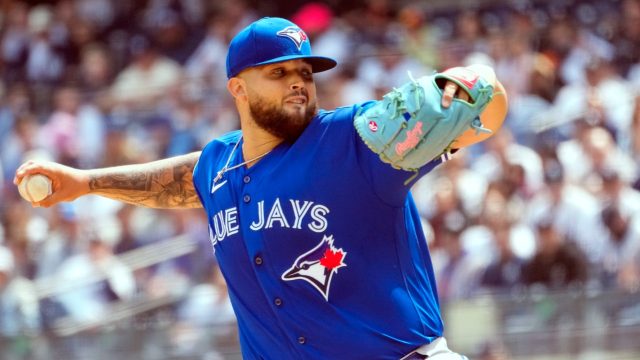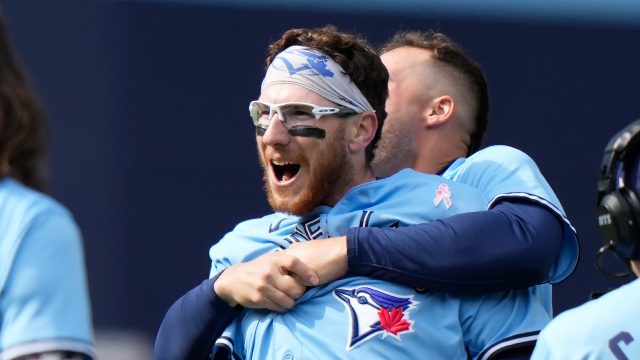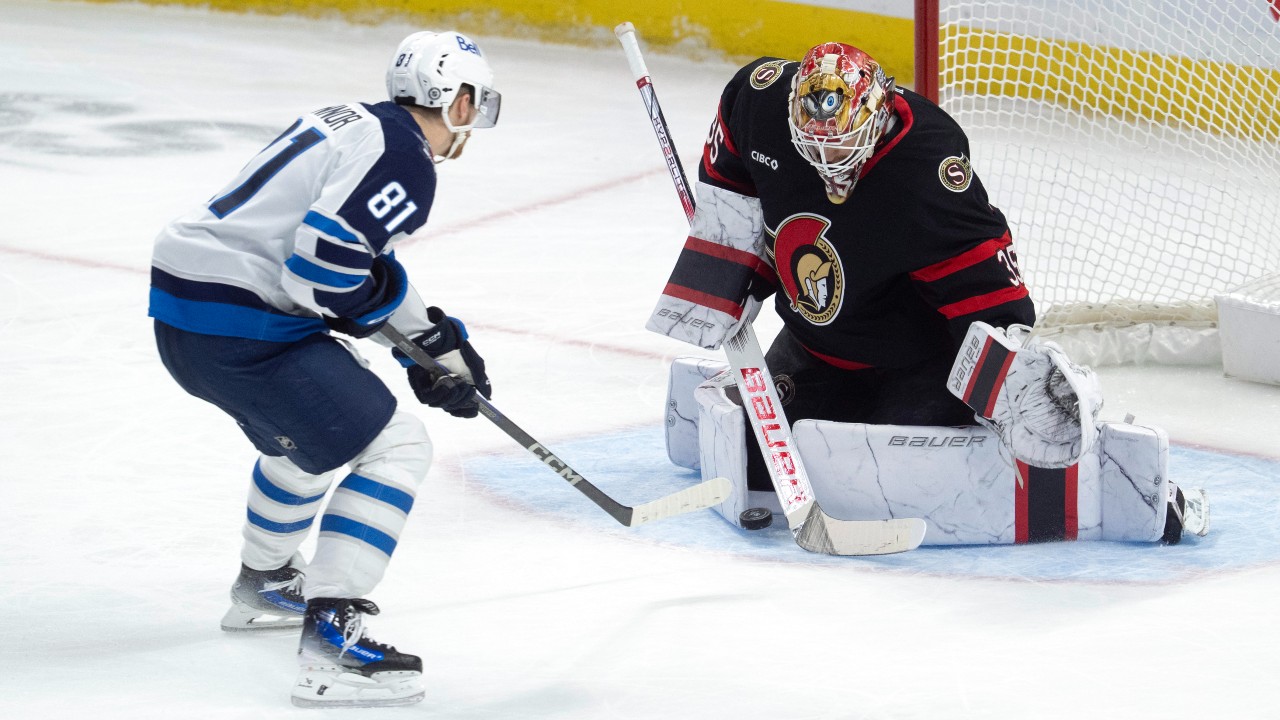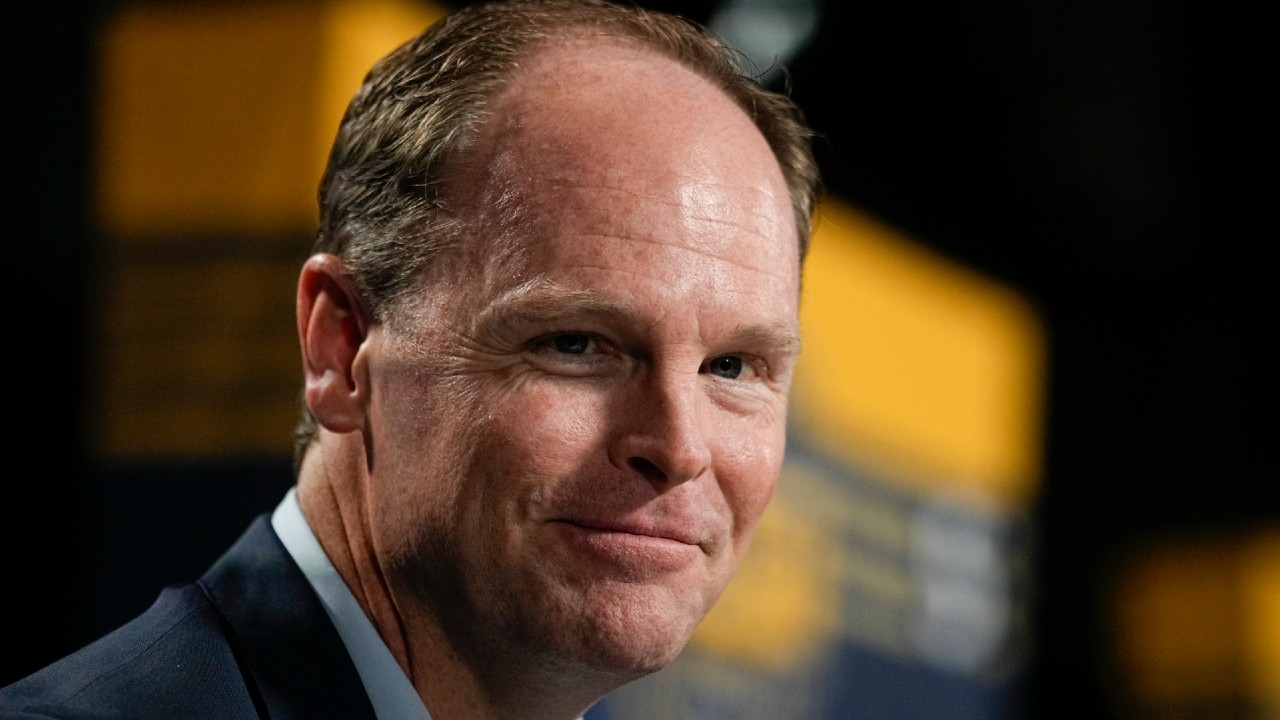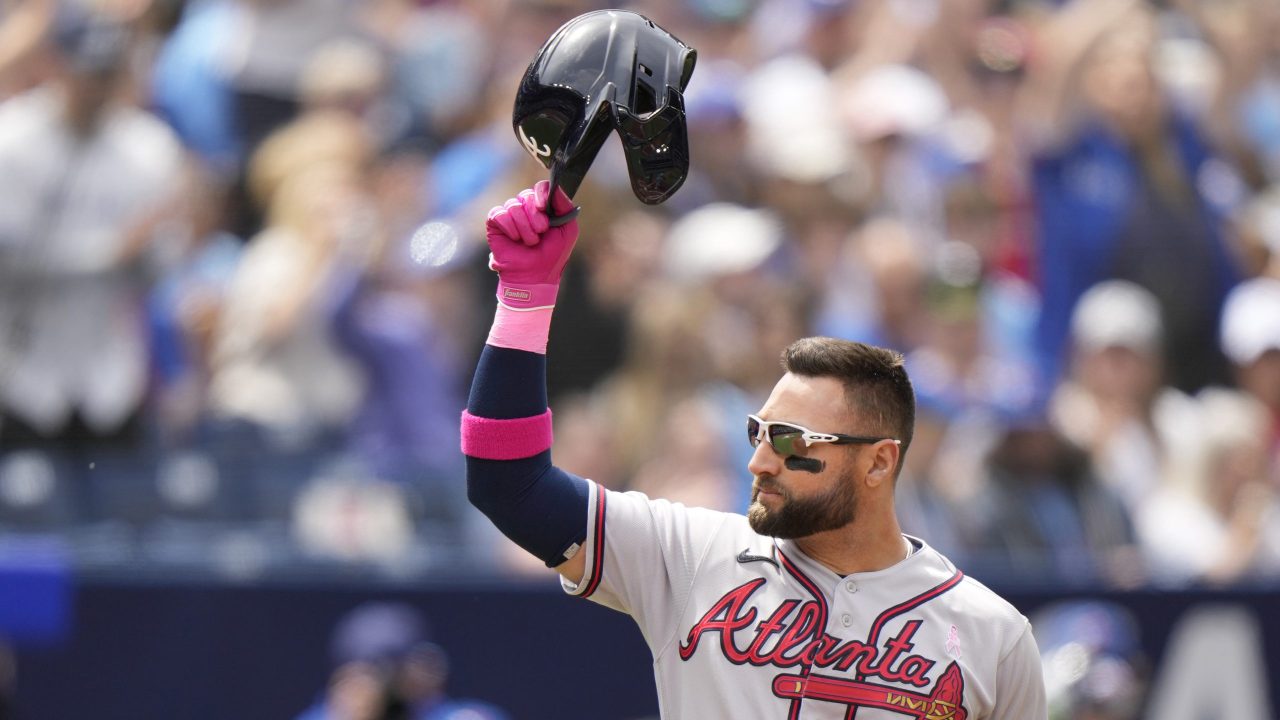
TORONTO – The 100th career home run for Kevin Pillar, a pinch-hit drive in the eighth inning May 6 to give Atlanta a 5-4 win over the Baltimore Orioles, triggered a flood of memories for the 34-year-old outfielder.
Being selected in the 32nd round of the 2011 draft by the Toronto Blue Jays. Overcoming long odds to climb up the organizational ladder. Learning hard lessons and winning over coaches and player development staff. Breaking through and establishing himself in the majors. Two unforgettable trips to the post-season. A gutting trade amid an organizational reset. The series of vagabond seasons culminating with the fulfilment of a childhood dream to play for his hometown Los Angeles Dodgers. The shocking injury that soon after prompted him to consider walking away. Finding the determination to keep going. A new opportunity from an old backer in Atlanta president of baseball operations and GM Alex Anthopoulos. A subsequent milestone.
“I know to a lot of people 100 homers is an insignificant number,” Pillar says during a weekend faceoff between his seventh and first clubs, “but to me, it was a huge accomplishment. And then the way it happened was just a cherry on top. Part of it, too, is anytime you go to a new organization, you’re kind of looking for a moment that people remember, your teammates remember to feel part of the organization, to cement yourself in. It was a really cool moment. I’m not done. I’ve still got some more things I’d like to accomplish individually, 1,000 hits, 100 stolen bases (he’s at 952 and 94), and most importantly, the main reason I’m here is I want to win a World Series.”
With Atlanta, he’s certainly on a team that has a chance to do that, even after a Toronto Blue Jays sweep of the NL East leaders over the weekend. Pillar went 1-for-4 with a homer and a walk in his sole appearance of the series, Sunday’s 6-5 walk-off loss, capping off an emotional trip back north.
His first visit to Rogers Centre as an opponent, some three weeks after his jarring first-week-of-the-season trade to the San Francisco Giants in 2019, “gave me closure, gave me a sense of peace.” Since then, his career has taken a number of twists and turns, each underlining the grit he’s needed to hang in the game so long, amassing parts of 11 seasons and 1,055 games.
Staring up at the Rogers Centre rafters, he says, “I still get goose bumps looking up at the banners we were able to put up here,” celebrating the 2015 AL East crown and 2016 wild-card victory, “and know how close we were to winning the ultimate prize.”
Coming back seven years later, “the best way to describe it is distance makes the heart grow fonder,” Pillar says. “It almost feels like a dream, like a distant memory until you come back. This was obviously circled on my calendar. Then you land and … I just think about all the amazing things we were able to accomplish here and it’s always nice to be reminded of really magical times in my life.”
And the journey, too.
As a 32nd-round pick, his leash in the system was short, so he needed to impress immediately, which he did. Pillar posted a .911 OPS over 60 games in rookie-level Bluefield out of the draft and then an .813 mark in 2012 between low-A Lansing and high-A Dunedin.
Blue Jays manager John Schneider crossed paths with him during minor-league spring training back then and remembers that while Pillar “was always getting hits,” more impactful was that “you see him play every day and he helps you win.”
“You really appreciated the competitor he is, the defender he is, the base-runner that he is – it’s just a complete baseball player. That’s why it was easy to pull for a guy like that. There are a lot of coaches, myself included, that really had his back in the minor leagues.”
Also among them was Kenny Graham, his hitting coach at Bluefield in 2011 and Lansing in 2012 who is now the director of player development for the Detroit Tigers. Pillar says Graham “probably had the biggest influence on my career” because “I had a lot of moments of immaturity with him and he didn’t shy away from teaching moments.”
The exact circumstances that triggered one of the more lasting lessons one day with Lansing are hazy – something like a bad at-bat late in an 0-for-4 day amid a down week. But Pillar remembers throwing his helmet and batting gloves in the dugout, muttering how he’s “an automatic out” and then not seeing his gear once the game was over.
“I’m already upset and finally found my stuff in the trash can,” says Pillar. “I come in (to the clubhouse), guns blazing, like who did this? He didn’t shy away. He said, ‘It was me. What are you going to do about it?’ Am I going to fight the coach? No. But I always remember that teaching me a valuable lesson of riding out the waves of emotions in this game. He was one of the early guys that opened up some eyes of guys at the higher level and then Alex and the front office and (then manager John Gibbons) to at least put me on the map.”
Pillar debuted in 2013, was up and down that year and the next, when he at one point was demoted after throwing his batting gloves when Gibbons pinch-hit for him in a game. Then in 2015, he seized the everyday job in centre field from Dalton Pompey. A near-reckless determination led to a series of more electrifying plays in the outfield, putting him consistently in the running for Gold Gloves with another player with a similar backstory, 2010 31st-round pick Kevin Kiermaier.
“I always remember that,” Kiermaier says of how both were drafted late. “And I’ve always appreciated the way he goes about it and how hard he plays the game. He’s shown that he’s prepared to do whatever it takes to win. Put his body on the line. And I always root for trying to go for guys like him. I appreciate the guys like myself who weren’t top prospects, guys just laying in the weeds and as time went on, did the little things right and we were both able to make a career playing this game when the odds are probably against us. It’s a beautiful thing.”
Another beautiful thing for Pillar was joining the Dodgers on a minor-league deal last year and then being called up to join them at the end of May. In his fourth game, he found relief and joy in collecting his first hit for his boyhood team, but the story turned for him later that outing, when he slid into third base and broke his left shoulder socket. Surgery that was expected to end his season followed and “there was a moment that I wasn’t sure that I still wanted to play anymore,” he says. “Getting a little bit older and having young kids and going through a serious shoulder injury. It made me question what I really wanted to do.”
During rehab, Pillar spoke with Dodgers GM Brandon Gomes about what his future might look like. Gomes suggested that if he wasn’t able to play again that season, he should consider winter ball to prove himself again before re-entering the market. Instead, Pillar sped through his recovery to appear in six games with triple-A Oklahoma City, worked through some intrasquad games at Dodger Stadium and experienced “a moment of clarity of, what else would I rather be doing than this?”
“I proved to myself I could still play at this level,” he says. “There are very few guys that get to go out on their own terms, and I just didn’t want what I felt like was a pretty good career to end on injury.”
Over the winter, Pillar told teams that he wasn’t looking to be triple-A depth, that he wanted a legitimate opportunity to win a big-league job. Eventually, Anthopoulos presented him with one and he’s embraced life as a right-handed bat off the bench.
“He believed that I could still be an asset to this team,” he says. “I told Alex like, ‘Yes, I still want to play every day, if you run me out there, I’m going to be prepared to do it. But I’m also mature enough and understanding that I can play this role and I want opportunities to do it because I’ve seen guys prolong their career being able to hit left-handed pitching, play good defence in the outfield.’ I was thankful he gave me an opportunity. …
“If I am able to do it well, who knows how many more years I can get out of this?”
Given his journey, more than one might expect.


